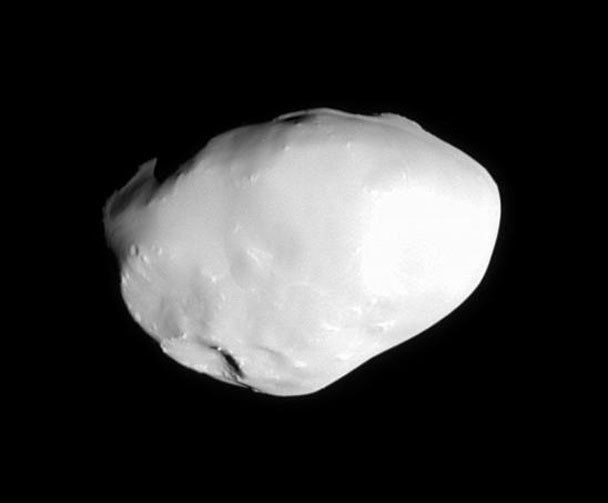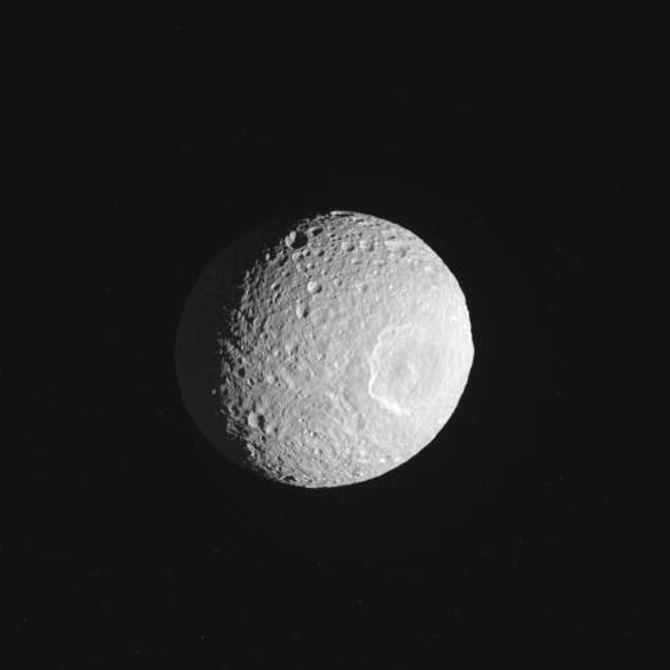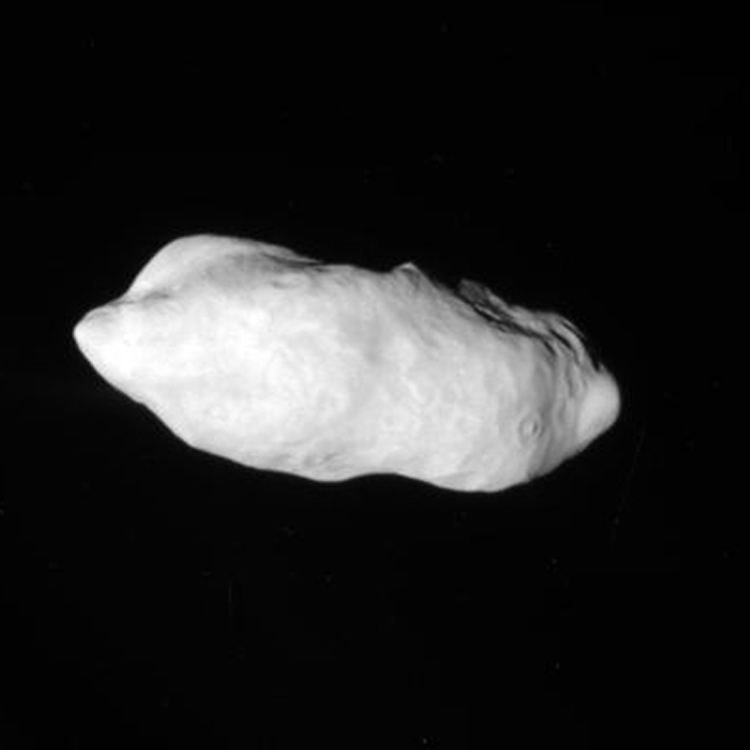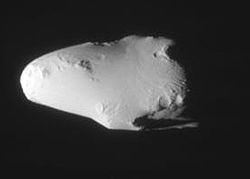Discovery date March 13, 1980 Eccentricity 0.000 Orbital period 45 hours Semimajor axis 294.619 million m | Adjectives Calypsonian Discovered 13 March 1980 | |
 | ||
Discovered by Dan PascuP. Kenneth SeidelmannWilliam A. BaumDouglas G. Currie Inclination 1.56° (to Saturn's equator) Similar Saturn moons, Other celestial objects | ||
Calypso (/kəˈlɪpsoʊ/ kə-LIP-soh; Greek: Καλυψώ) is a moon of Saturn. It was discovered in 1980, from ground-based observations, by Dan Pascu, P. Kenneth Seidelmann, William A. Baum, and Douglas G. Currie, and was provisionally designated S/1980 S 25 (the 25th satellite of Saturn discovered in 1980). Several other apparitions of it were recorded in the following months: S/1980 S 29, S/1980 S 30, S/1980 S 32, and S/1981 S 2. In 1983 it was officially named after Calypso of Greek mythology. It is also designated as Saturn XIV or Tethys C.

Calypso is co-orbital with the moon Tethys, and resides in Tethys' trailing Lagrangian point (L5), 60 degrees behind Tethys. This relationship was first identified by Seidelmann et al. in 1981. The moon Telesto resides in the other (leading) Lagrangian point of Tethys, 60 degrees in the other direction from Tethys. Calypso and Telesto have been termed "Tethys trojans", by analogy to the trojan asteroids, and are half of the four presently known trojan moons.

Like many other small Saturnian moons and small asteroids, Calypso is irregularly shaped, has overlapping large craters, and appears to also have loose surface material capable of smoothing the craters' appearance. Its surface is one of the most reflective (at visual wavelengths) in the Solar System, with a visual geometric albedo of 1.34. This very high albedo is the result of the sandblasting of particles from Saturn's E-ring, a faint ring composed of small, water-ice particles generated by Enceladus' south polar geysers.

